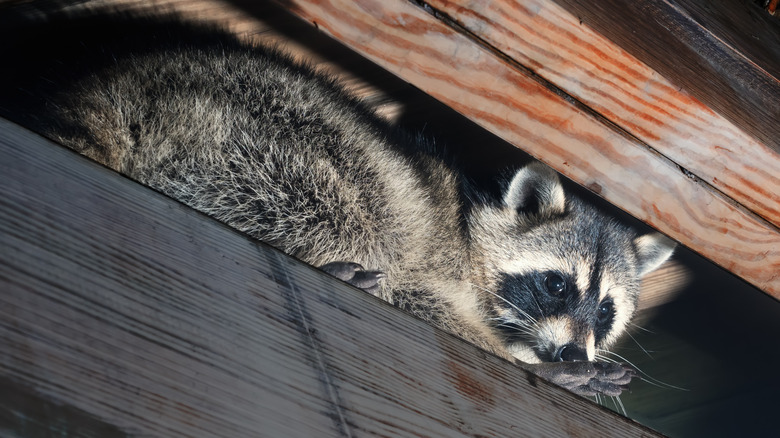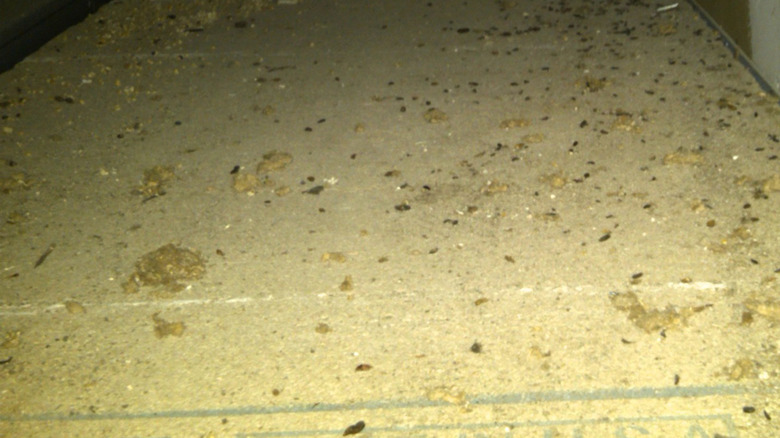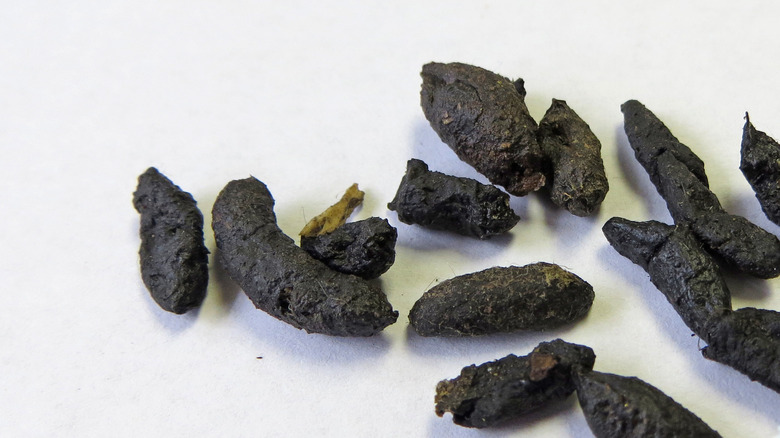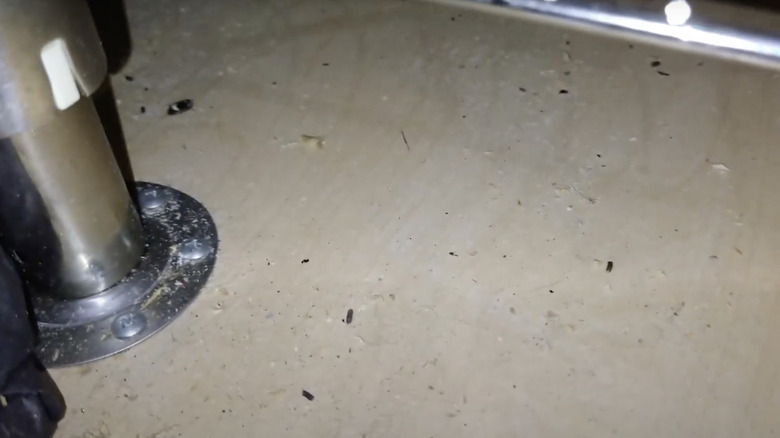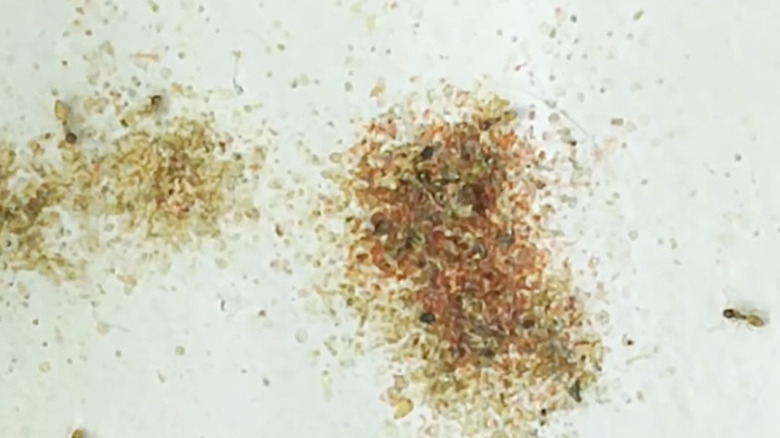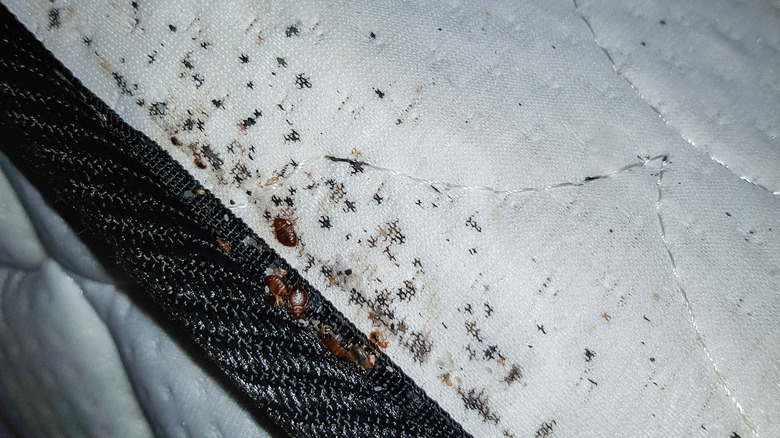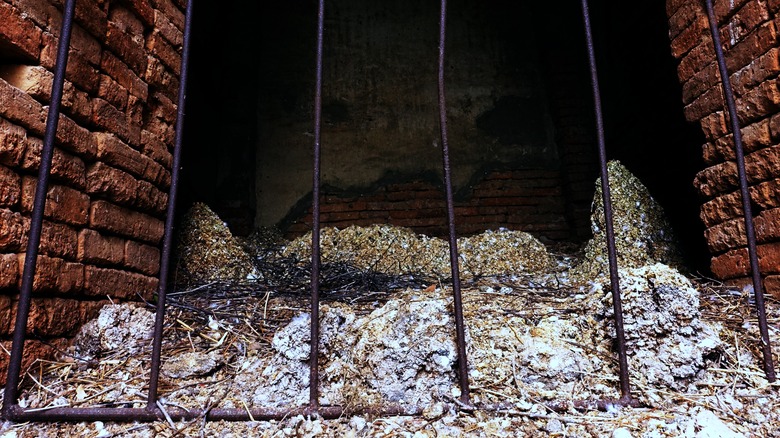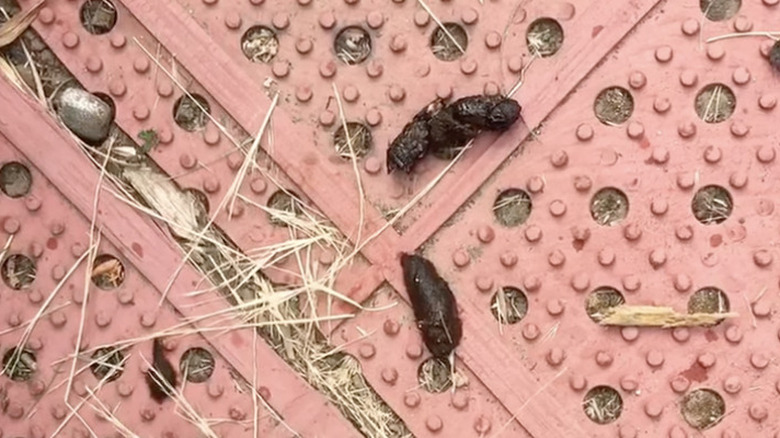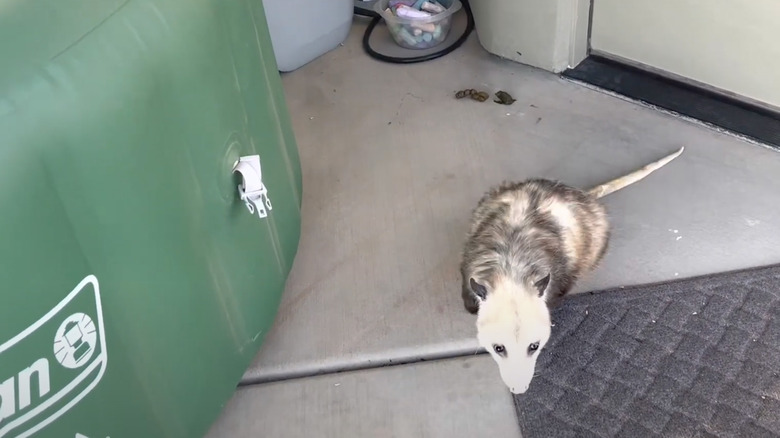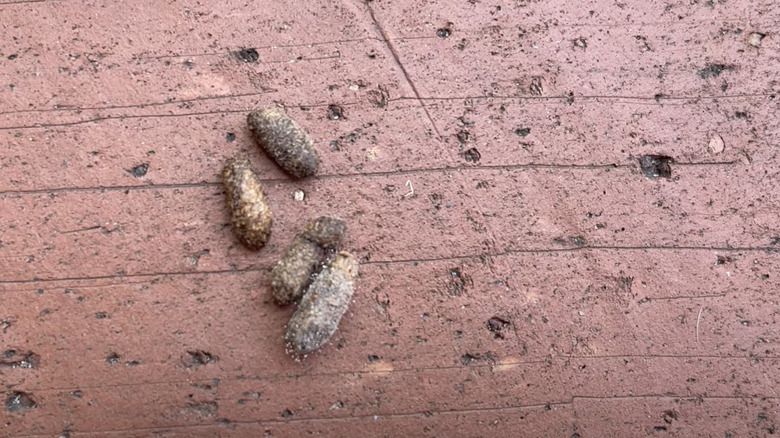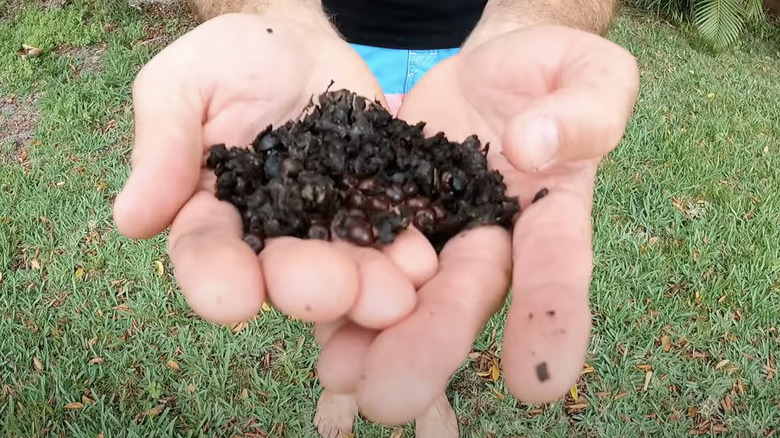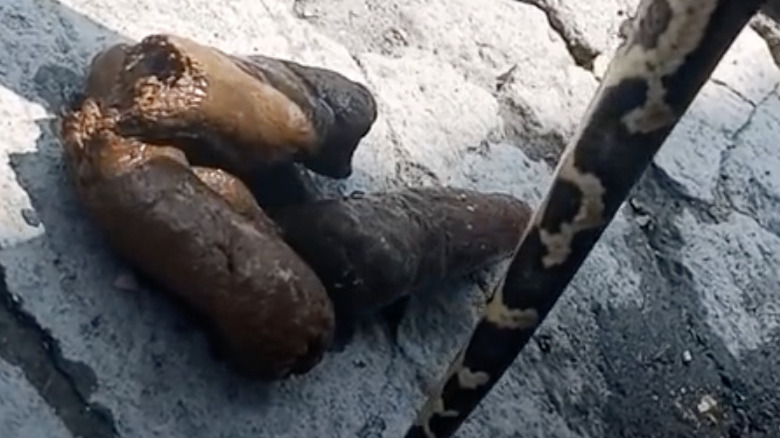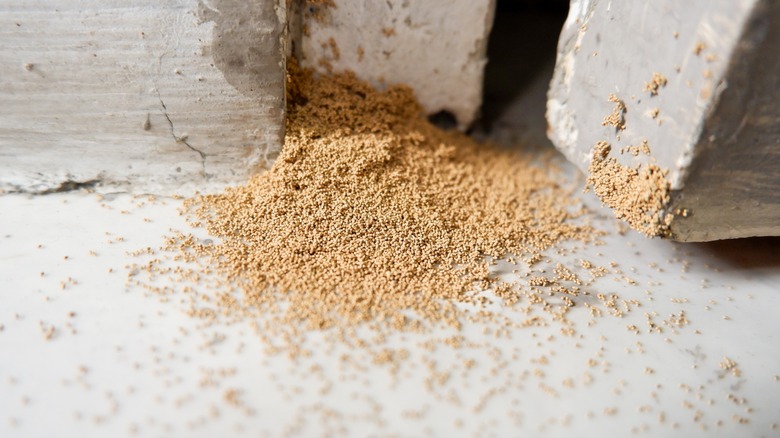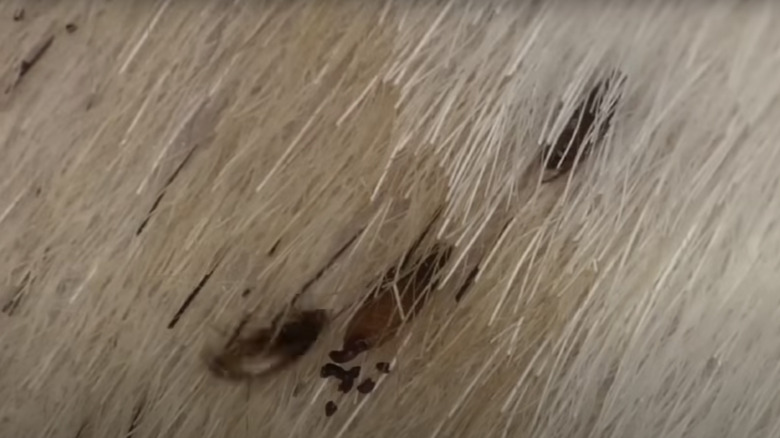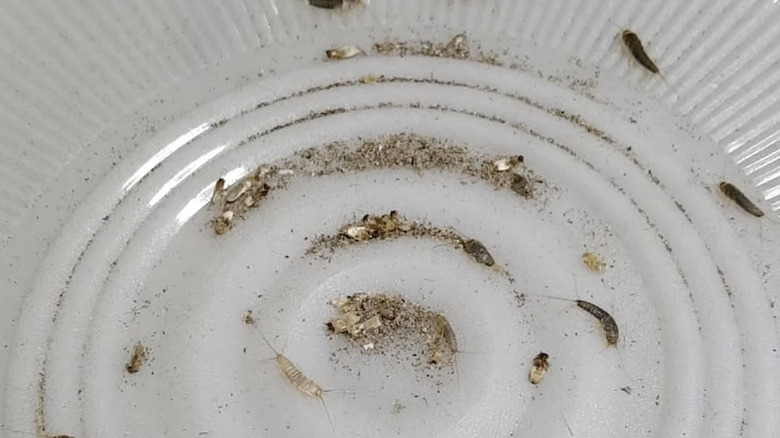How To Properly Identify Pest Droppings & Rid Your Home Of Unwanted Guests
While it might be a little unpleasant, knowing what kind of poop pests leave behind makes getting rid of those pests easier! For example, mice leave little droppings that look like rice, while rats leave bigger ones shaped more like capsules. Cockroaches have waste that looks like coffee grounds and bedbugs leave tiny dark spots that look like ink stains. Even if you don't see the creatures, you will know how to get them out of your house if you know what their waste looks like.
Of course, there are general rules for ridding your home of unwanted guests. You need to make an effort to keep things clean, like wiping up spills right away, sanitizing surfaces regularly, and storing food in airtight containers. If you don't want outside coming inside, seal up any openings in walls, floors, and foundations where pests can get in. Get rid of clutter so there are fewer hiding spots and places for pests to make nests. Some pests must be vanquished with the harshest chemicals, while others should be humanely relocated with the help of professionals. If you've found droppings around your house, match it to the animal below so you know what to do.
Mice droppings are small and dark
Mouse droppings are small and dark. Sometimes, they can look a bit like muddy rice. Mice usually leave a few droppings behind in a little pile. Each piece is typically about 1/8 to 1/4 inch long. When droppings are fresh, they're darker and kind of wet. But when they're older, they get dry and crumbly. While mice might decide to go anywhere in your home, there are a few places you are most likely to discover the scat. Look along walls, inside cabinets, under sinks, or near food sources, like the pantry. If not the main house, you might see these dropping piles in your attic near any exposed entry points, or in the dark corners of your basement.
To keep mice away, focus on prevention. Even if you have a mouse or two inside, they might look elsewhere if their food supply dries up. Keep your home clean by quickly cleaning up crumbs and food scraps and storing your ingredients in air-tight containers. Mice can chew through cardboard boxes for cereal and oats, for example. However, if you place these foods in metal or plastic, the mouse won't have as much luck. In addition, check for gaps and cracks in your windows, doors, and walls. You can seal these with caulk or mesh to block out mice. Finally, set traps to catch any mice who are left behind.
Rat droppings are bigger than mice scat
Rat droppings are noticeably larger than mouse droppings, measuring about 1/2 to 3/4 inch in length. They have a more oblong shape and are often tapered at the ends. They might not be in little piles, either. But, like mouse droppings, you can tell how recently the rat has been there by the color and texture of the scat. Fresh rat droppings are dark and moist, turning dry and crumbly over time. You should expect to see these droppings in your attic, basement, or the crawl spaces of your home if you have a problem.
Rats often enter through openings around pipes, vents, and windows, so pay special attention to these areas. If you keep your garbage cans or compost pile against your house, or a pile of chopped wood, look around those areas, too. The contents of these are super appealing to rats, so if there is an entry point nearby, they will take advantage of it. After sealing the cracks with caulk or mesh, you can implement a long-term solution by updating your siding or replacing the bricks. Place rat traps near where you find the droppings to catch any stragglers you can't keep out. There are many options available, including humane catch-and-release traps. These are better if you have dogs and cats around and worry about them potentially ingesting the rat poison.
Cockroaches waste looks like spice mix
Roach poop is typically called frass. It doesn't look like the waste you might be used to. Instead, you might think you have spilled coffee grounds or a spice mix. Upon close examination, you will find many little, dark, tube-shaped pellets. You usually find these droppings in the kitchen or bathroom. Roaches leave waste in cabinets, under sinks, behind your appliances, or along the baseboards. They also love nesting in small, dark spaces, like between tea containers on the counter or spice jars in the pantry.
If you see these droppings, the best way to get rid of them is simply to wipe them up with a damp paper towel. You can then use any household cleaner to disinfect the area. Once cleaned, getting rid of the roaches is the hard part. This is especially true if you are in an apartment, as they might be coming from a nest elsewhere in the building. The best thing to do is to set out roach traps to kill as many as possible. Look for crevices near where you found the poop (however tiny!) and seal them with caulk or weatherstripping. You can also deter them by giving them fewer places to hide. Ensure that all food is in sealed bug-proof containers (i.e. not cardboard) and reduce the clutter on your countertops.
Ant waste looks like pepper
Ant droppings are specks that resemble grains of sand or black pepper. You will find them scattered near ant nests or along their foraging trails. As ants primarily excrete liquid waste, the droppings are more likely to be discarded food particles or just debris. Inside the house, these will usually be near the kitchen as the ants search for food. You might also see them near doors and windowsills as the ants make their way inside.
After cleaning up any ant frass you find in your home, the next best thing to do is start on future prevention. Keep your food sealed up tight in containers to avoid attracting ants. This might mean removing chips, cereals, and the like from the original packaging. You should also pay more attention to the crumbs you are leaving behind. You can purchase a small tabletop vacuum to make getting rid of them easy. There are also chemical options, like ant bait, or natural options that ants might not like, like sprinkling mint oil or cinnamon near their entry point. However, the chemical options tend to work best.
Bedbug waste looks like ink
Bedbug poop looks like little dark stains on fabric, like sheets, mattresses, or upholstered furniture. These spots are usually a kind of reddish-brown or black and might look like ink marks. Even though each mark is small, they can group and make noticeable larger shapes, making them easier to see. Popular places to find bedbug poop are the seams and folds of mattresses, especially as this is where the insects hide during the day. You can also check along the underside of cushions, or seams of chairs and couches if you suspect bedbugs.
Dealing with a bedbug infestation is tricky, but getting rid of them is not impossible. The important thing to remember is that you can't starve or poison a bedbug — you have to kill them with heat. Infested mattresses are best thrown away. Mark it as infested, though, so none of your neighbors picks it up and brings the bugs into their home. Next, wash your bedding, linens, and clothes (anything fabric from the room with the bedbugs) on high heat. Dry them on a long cycle, as hot as you can make it. You do this to kill the bugs and destroy their eggs. Repeat as many times as needed. While you are working, you can place tape on the floor across the entrance to the room, so any bugs cannot escape to other parts of your home.
Bat droppings smell terrible
Bat droppings are called guano. Although the droppings vary based on the species, they typically present as small, dry pellets with a crumbly texture. They look like dark brown or black granules, kind of like a pile of mulch. Sometimes, the outside of the droppings turn white with age. If you can't tell it is bat guano by looking at it, you will usually recognize the droppings by their smell. They smell strongly of ammonia because the waste is full of nitrogen-rich compounds. You might have bats roosting in your attic or garage. Because bats tend to sleep in the same place each night, you will notice the waste begins to pile high in certain spots.
If you suspect bats are roosting in your home, be careful with bat droppings because they can have fungi that make harmful spores. You shouldn't touch the guano with bare hands and should keep your pets away. Because bats can carry rabies, it is best to contact a professional to relocate them. To keep them from returning, be sure any vents in your garage or attic are sealed. If you are concerned about airflow, you can cover the open areas with mesh.
Skunk poop changes with its diet
Skunk poop usually looks like small tubes with blunt ends, and it can be dark brown or black. Sometimes you'll find bits of bugs, seeds, or fur in the poop, depending on the skunk's diet. They often leave their droppings on the edges of yards, under decks, or near crawl spaces like basements and the back of the garage. Skunks aren't picky eaters, so you might also find their poop near garbage cans or compost bins. If skunks are living under your porch or shed, you might find their poop nearby. It's important to be careful when dealing with skunk poop because they can carry diseases and parasites, like roundworms.
To get rid of skunks in your house, first, find and dispose of things that might attract them, like unsealed pet food or open garbage. You can also put out smelly things like rags soaked in ammonia to keep them away. Use lights or sprinklers that turn on when they sense movement to scare them off at night. If you see a skunk, don't approach it because it might spray you. Instead, remember where it came from and where it is going, so you can alert a pest control professional.
Opossum poop means you should call for help
Opossum poop is generally long and skinny with pointy ends. Like most poop, it is dark brown or black. They typically make their homes in garages, attics, or under desks. Anywhere safe, dry, warm, and with lots of access to food. If you have a backyard garden or don't secure your trash cans, you might find opossums. You are most likely to find opossum scat near these areas.
Opossums are a good part of the natural food chain, so if you suspect one is living in your home, don't kill it. Don't try to confront them either because they might hiss or show their teeth. Instead, contact a pest management company to simply relocate the possum to a more wooded area. Once gone, be sure to lock up your trash cans. It can be a good idea to place a brick on top of each can, so it can't blow open. Do not overload your trash cans as this attracts lots of wildlife. If you keep pet food outside, be sure it is in a sealed container and not just the bag.
Squirrel waste is smooth
Squirrel droppings look like cylindrical pellets with rounded edges. They're about 1/2 an inch long and appear smooth, like a BB. The color can vary, but it's usually brown or dark brown because of what they eat. Sometimes their poop has bits of plants that they couldn't digest. While it is typical to see squirrel poop around your yard, they might also make a nest for themselves in your attic or garage, as these spaces seem warm and safe.
If you see any inside your house, the first thing to do is close up any way they could get in. Look around your attic for any gaps in the siding, tears in the insulation, or broken slats in the ventilation system. You can put mesh or hardware cloth over vents, chimneys, or any other openings, so air can move through, but squirrels can't. You might also want to install lights that turn on when they sense motion to scare squirrels away. If you are concerned about trapping a squirrel inside your attic with these measures, ask a pest removal company to collect and move them before you begin.
Racoons use designated latrines
Raccoon poop, most often called scat, is shaped like a cylinder. It is dark brown, or sometimes black depending on how fresh it is. You might see food remains in the poop, like berry skins or seeds. Like a cat, raccoons usually go to specific spots, called latrines, to do their business. Because of this, you are likely to find large amounts of poop in one area. You might find their poop near things with food, like close to garbage cans, in the garden, or around pet food bowls. If raccoons get into your attic or crawl spaces, they might also leave their droppings there.
Raccoons can carry diseases, so it's best to call a pest control company to come and relocate them instead of taking them on yourself. To keep raccoons away from your house in the future, make sure you have lids on your trash cans that fit tightly, and don't leave pet food outside overnight. Raccoons are smart, so placing a brick on the cans will protect them from the animals' nimble fingers. Check your house for gaps in the roof and vents where raccoons could get in. You can put up mesh as a temporary fix and look into replacing the bricks or siding in the long term. Trim back any tree branches raccoons could use to get to your roof. You can also try putting up lights that turn on when motion is detected to scare them away.
Snakes' waste is tubular and soft
Snake droppings can look different depending on the type of snake. Generally, snake poop is tubular and looks soft and moist. It can be brown or black and might have bits of bones or fur from their prey. If you're looking for snake droppings around your house, remember that snakes are attracted to warm and dark spaces, like gardens, sheds, or basements. If you live in a part of the world with pythons or boa constrictors, they might live in your attic.
Since you can't be sure if the snake is venomous, if you notice snake droppings around your home, it is best to check in with a professional snake catcher. While you search for the reptile, keep pets close by so they do not become prey. You can also do a few chores to ensure the snake doesn't enter your house (if it hasn't already). Keep your lawn short and trim trees and bushes to give the snake fewer hiding places. Use cement or caulk to seal any holes around your home's exterior. Place mesh with small holes around ventilation openings, so a snake cannot slither through. It is also best to keep things like wood piles far from entrances to your home, as snakes might enjoy resting in the logs.
Termites frass looks like sawdust
Termites don't leave visible poop like mammals do. Instead, they produce small, pellet-like feces called frass. Drywood termites, for example, poop out frass that looks like tiny, hard pellets and often have a different color depending on the wood they eat. While they are not droppings, subterranean termites also build mud tubes for shelter and getting around. Finding these tubes could mean you have an infestation. You might spot termite frass near infested wood around your house, usually in small piles. You might think it is sawdust.
If you see termite frass in your house, you need to act right away. While it may seem counterintuitive, don't clean off the frass. Take a few photos of it and contact a pest control company. They will send someone to come and look at the frass to ensure it is termites. If you cleaned it up, they can't be sure. While there are a few DIY options, getting rid of a termite infestation is best left to the professionals. However, to avoid termites in the future, make sure things don't get too damp by fixing leaks and keeping good airflow in all rooms. Don't let wood touch the ground outside (like log piles) and use materials that termites don't like (not wood) on the exterior of your home.
Fleas leave droppings that look like coffee grounds
Flea poop is sometimes called flea dirt. It looks like coffee grounds, but the color can range from black to reddish-brown. The particles are usually small and granular. Flea dirt is partially digested blood, a favorite food for fleas. You might find it on your pet's skin or fur, as well as in places where they like to relax, like their bedding or your carpets.
If your pet has fleas, you should contact their vet about the right medicine to get rid of them. You should also launder all of their bedding and cloth toys. To keep fleas away in the future, regularly groom your pets, using all the flea prevention products your vet recommends. It's also a good idea to wash your pet's bedding often in hot water, and regularly vacuum your home, especially carpets, rugs, and upholstery, to get rid of the flea dirt. When you're done vacuuming, throw away the bag or clean the canister so any collected flea dirt (or fleas!) is gone for good.
SIlverfish waste is in damp, dark spaces
Silverfish don't poop like other animals do. Instead, they get rid of their waste when they shed their exoskeletons. If you look closely, you might see little black specks that look like pepper. These typically show up in closets, bookshelves, or dark corners where the insect won't be bothered. Because silverfish like the dark and humid places, you might also find their poop in bathrooms, kitchens, or basements — especially if your laundry room is down there.
If you want to stop silverfish from pooping in your house, you need to get rid of the things they like. You can lower the humidity by using dehumidifiers or fixing any leaks. You should also keep your basement and attic well-ventilated and vacuum or dust any storage areas. Silverfish (and other small insects) are best dealt with through annual bug sprays. You can purchase pesticides to spray around the exterior of your home, or hire a pest control company to do it for you if you don't want to handle the chemicals.
